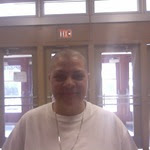Real World Math Doesn't Work
I used to blog for my old company, but they took the blog down. I am
not actually allowed to own the writings I put up on that blog, but as
I reference them on occasion in my writing I am putting those articles
up in my archives here for reference sake. I'll put the tag GS on those
articles noting that they were originally published on the http://schoolfinder.globalscholar.com/blog/
Real World Math Doesn’t Work
May 2, 2008 – 6:12 am by Brendan
According to this article research done at Ohio State University, using real world examples of mathematics in action hurts more than it helps.
To tell the truth I can understand where this might come from. It is a very messy business extracting math concepts from the math we use in the real world. My favorite textbook for teaching Mathematics is Connected Math, written by Michigan State University. Connected Math is a research based math program, meaning they spent money and time learning how children learn and retain math concepts and then put that knowledge into action. Furthermore, the team at MSU continues to review what is working and what doesn’t work.
I can hear you ask, “How is this different from any other Math textbook out there?” Most math textbooks start with a set curriculum, then they hire teachers and other experts to compile lessons and units to teach the skills and concepts. While the editors do a good job of keeping a good overall organization to the book and the lessons and units do work well in a good textbook, there is a weakness in this approach.
The writers are writing the lessons that are successful for them. This system has been around for a while and it is an improvement on letting thousands of individual teachers start with nothing. I don’t believe it is the best system. I see the basic flaw being that there is no unifying force. Connected Math starts with Mathematics as a theory and teaches students how to understand it in the real world. Connected math attempts to teach the curriculum as it fits into mathematics as a whole, while traditional texts simply teaches skills and concepts without a true final destination in mind.
The weakness with Connected Math is that teachers have to understand Mathematics and the theory and methods of teaching math. While there are minimum standards for middle-school math teachers, this doesn’t guarantee they will be knowledgeable enough to effectively teach Connected Math. If the teacher is able to teach Connected Math effectively, then the amount of time, energy, and creativity required to teach Connected Math can also rule out some teachers. (Don’t get me wrong I don’t know any lazy teachers, but even experienced teachers will need to put in some 60 to 70 hour work weeks with Connected Math.)
At the end of the day OSU has done one research paper showing that teaching math using real world examples slows the learning of math. While MSU and many others have hundreds of research articles showing that students learn better by connecting to the real world. I think the difference is how much time is spent taking the real world applications of math and attempting to correlate the lessons learned with formal math concepts, something Connected Math puts heavy emphasis on doing.

Comments